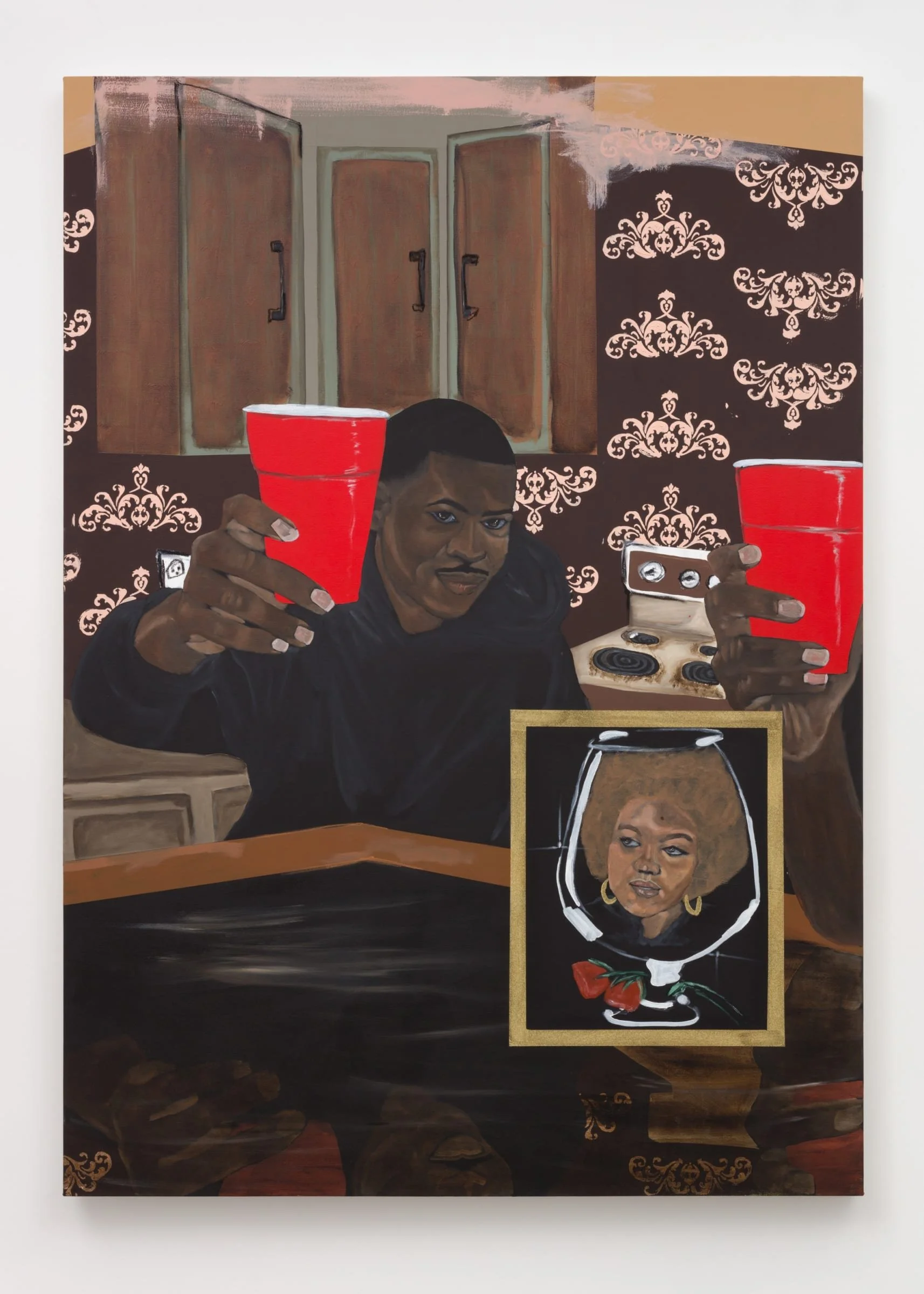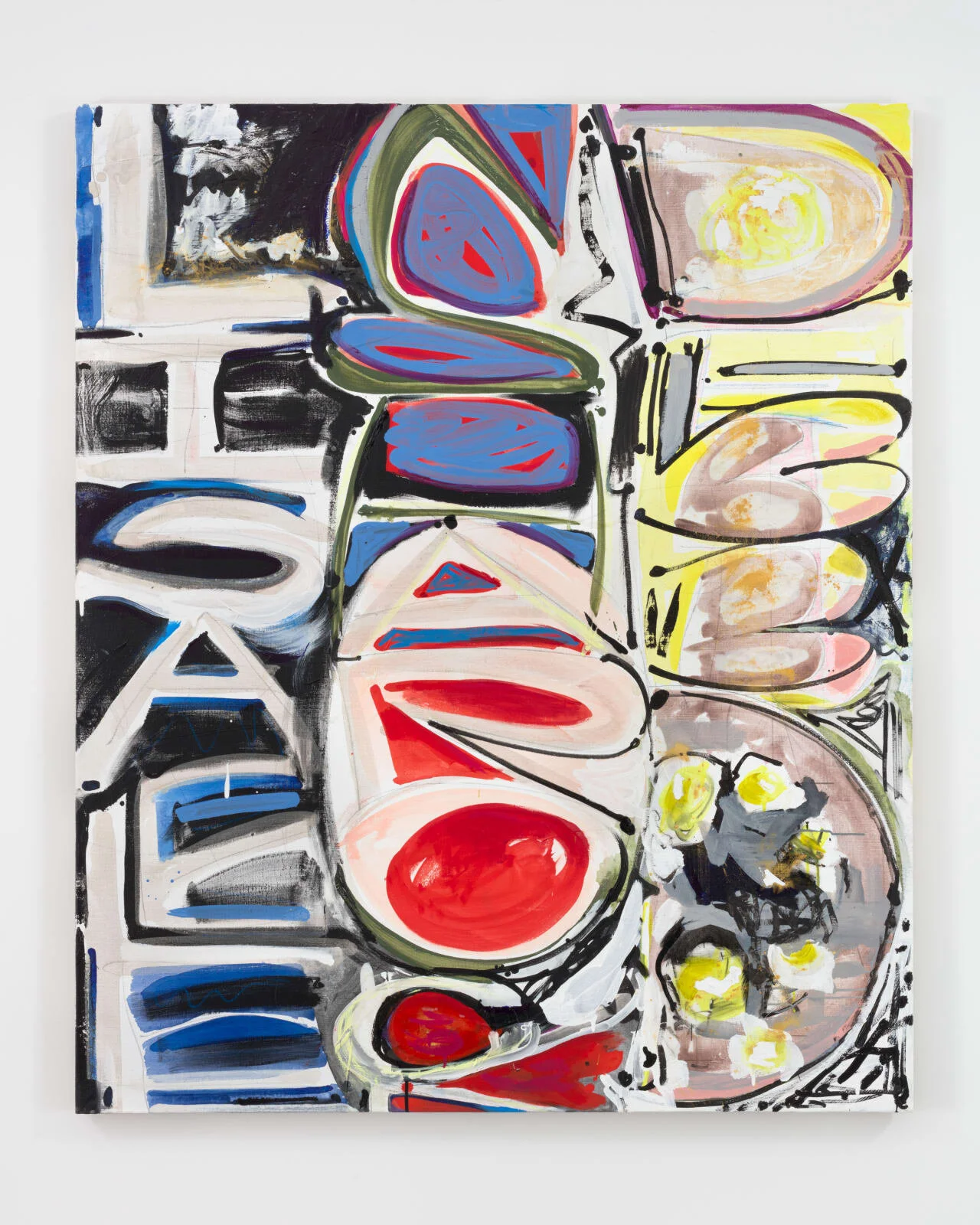Jammie Holmes
“What We Talking About”
New York, 507 West 24th Street
Holmes examines and repositions perceptions, experiences, and themes of Black life as they relate to both African American history and contemporary realities. Various signifiers of status and power, luxury and appropriation, acceptance and exclusion are significant themes in the artist’s work. Ornate gold frames simultaneously reference the exclusivity of art museums (Holmes did not visit one until he was an adult), and the colonial looting of gold from Africa, foregrounding the historical complexities of power and the difficult history behind much cultural presentation in institutional contexts.
Jammie Holmes Fred Hampton, 2022 Acrylic, glitter, gold leaf and molding paste on canvas 90 x 90 inches 228.6 x 228.6 cm JHO.19511 © Jammie Holmes
When Holmes was first teaching himself to paint, he studied Gordon Parks’s photographs, Rashid Johnson’s complex abstractions, and Kevin Williams’s iconic paintings of African American culture. As Holmes says, he studied faces, and the ways artists rendered them, until the organization and structure of the features clarified in his mind. This emphasis on faces is a leitmotif of Holmes’s work: Many of the paintings include a self-portrait, where the figure of the artist himself stands in, metonymically, for the presence of Black men in U.S. society.
Jammie Holmes Gold Geneva, 2022 Acrylic, oil pastels and glitter on canvas 84 x 60 inches 213.4 x 152.4 cm JHO.19501 © Jammie Holmes
Parallel to Holmes’s incorporation of portraiture into his painterly vocabulary, the paintings and video on view in What We Talking About reflect his ongoing engagement with contemporary and historical artistic practices: Holmes has recently been studying works from the Dutch Golden Age and the Italian Baroque. Visually, the influence of Caravaggio is evident in the deepening black of his palettes, while Holbein’s famous memento mori is recontextualized in a representation of Black southern life. The social themes of luxury as well as bourgeois life that pervade the works that he is studying parallel the artist’s formal and narrative explorations. Underlying this exploration is an intrinsically troubling or unsettling question: How to engage with the traditions of Old Master painting when the word Master is so violently charged in the history of American racism?
This capacity to simultaneously draw in and unsettle is exemplary of Holmes’s work. Scenes of warm, quotidian social interactions –– a game of dice, a gathering at a kitchen table –– also include figures of violent surveillance, from the allusive presence of unnamed white men, to outright confrontations with police. The theme throughout is resilience and vibrancy, a particular vision into a culture that evolves and endures.








